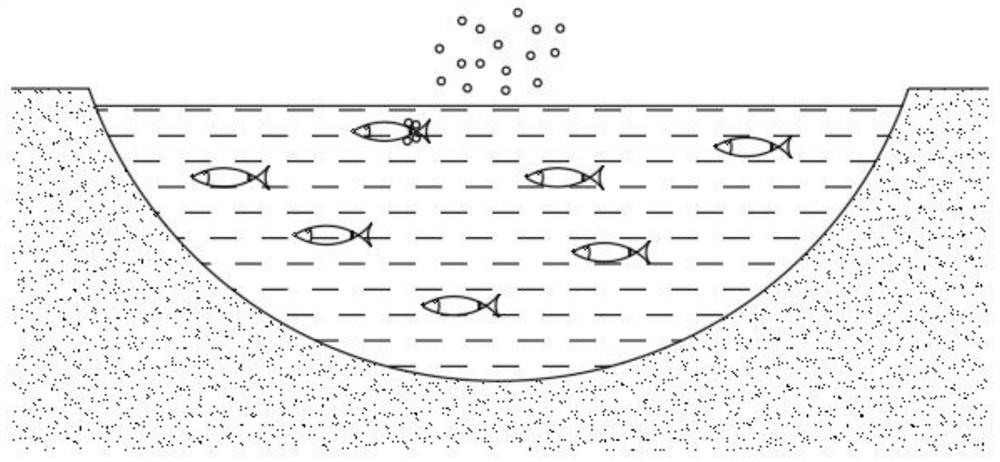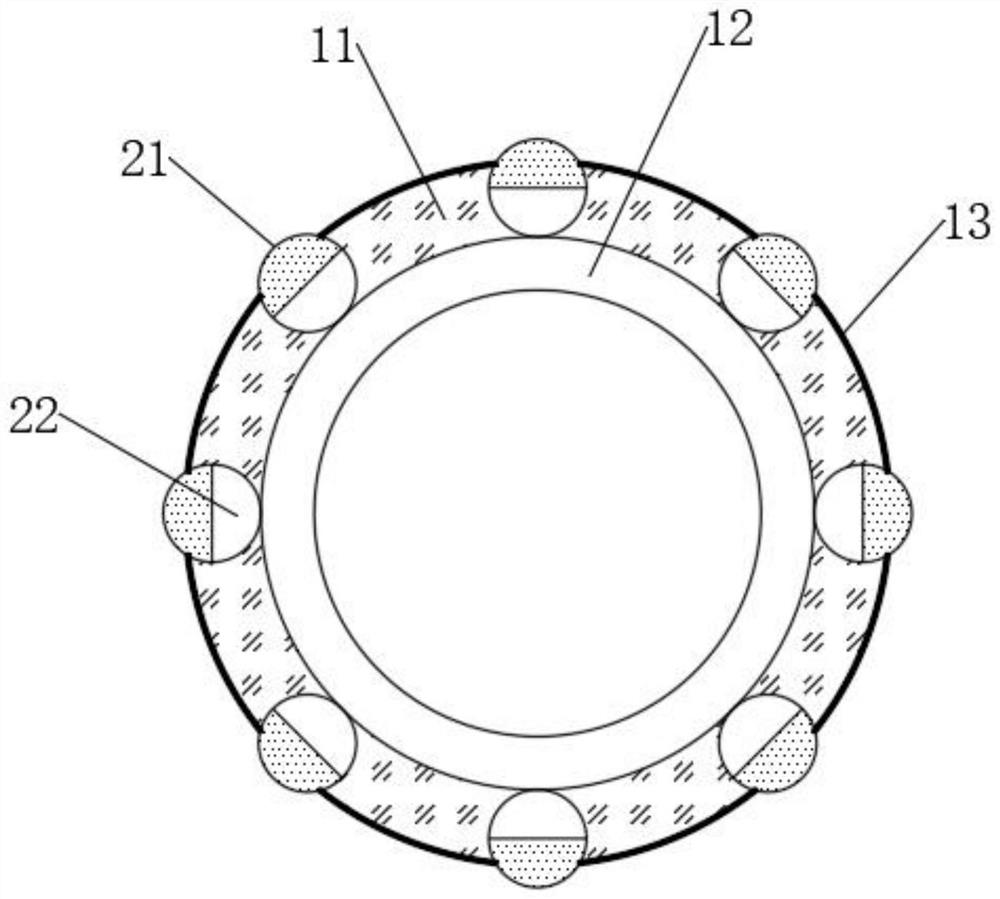Juvenile fish feed for aquaculture and feeding method
A juvenile fish feed and aquaculture technology, applied in animal feed, animal feed, application, etc., can solve the problems of food vicious competition, loss, and slow growth of juvenile fish, so as to improve the delicacy of meat, improve the health of growth, and exercise The effect of exercise capacity
- Summary
- Abstract
- Description
- Claims
- Application Information
AI Technical Summary
Problems solved by technology
Method used
Image
Examples
Embodiment 1
[0042] see figure 1 , a feed for juvenile fish for aquaculture and a feeding method thereof, comprising the following steps:
[0043] S1, select the juvenile fish to bind the suction ring at its tail, and then put it into the culture pond for polyculture with adult fish;
[0044] S2. Making the exclusive feed for juvenile fish. The exclusive feed for juvenile fish includes the following raw materials in parts by weight: 5 parts of fish meal, 6 parts of meat meal, 15 parts of soybean meal, 5 parts of rapeseed meal, 3 parts of corn gluten meal, 5 parts of rice bran, soybean lecithin oil 0.5 parts of flour, 2 parts of soybean oil, 15 parts of starch, 1.5 parts of calcium dihydrogen phosphate, 0.25 parts of bentonite, 0.2 parts of 98.5% lysine, 0.5 parts of probiotics, 0.3 parts of vitamin premix, 2 parts of trace element premix share;
[0045] S3. Feed the juvenile fish exclusive feed twice a day in the breeding pond, check the growth of the juvenile fish every other week, and ...
Embodiment 2
[0058] A juvenile fish feed for aquaculture and a feeding method thereof, comprising the following steps:
[0059] S1, select the juvenile fish to bind the suction ring at its tail, and then put it into the culture pond for polyculture with adult fish;
[0060] S2. Making exclusive feed for juvenile fish. The exclusive feed for juvenile fish includes the following raw materials in parts by weight: 10 parts of fish meal, 9 parts of meat meal, 20 parts of soybean meal, 8 parts of rapeseed meal, 5 parts of corn gluten meal, 8 parts of rice bran, soybean lecithin oil 1.5 parts of flour, 3 parts of soybean oil, 20 parts of starch, 2 parts of calcium dihydrogen phosphate, 0.3 parts of bentonite, 0.25 parts of 98.5% lysine, 1 part of probiotics, 0.4 parts of vitamin premix, 2.5 parts of trace element premix share;
[0061] S3. Feed the juvenile fish exclusive feed twice a day in the breeding pond, check the growth of the juvenile fish every other week, and adjust the feeding amount ...
Embodiment 3
[0066] A juvenile fish feed for aquaculture and a feeding method thereof, comprising the following steps:
[0067] S1, select the juvenile fish to bind the suction ring at its tail, and then put it into the culture pond for polyculture with adult fish;
[0068] S2. Making the exclusive feed for juvenile fish. The exclusive feed for juvenile fish includes the following raw materials in parts by weight: 15 parts of fish meal, 12 parts of meat meal, 25 parts of soybean meal, 10 parts of rapeseed meal, 8 parts of corn gluten meal, 10 parts of rice bran, soybean lecithin oil 2.5 parts of flour, 5 parts of soybean oil, 25 parts of starch, 2.5 parts of calcium dihydrogen phosphate, 0.35 parts of bentonite, 0.3 parts of 98.5% lysine, 1.5 parts of probiotics, 0.5 parts of vitamin premix, 3 parts of trace element premix share;
[0069] S3. Feed the juvenile fish exclusive feed twice a day in the breeding pond, check the growth of the juvenile fish every other week, and adjust the feedi...
PUM
 Login to View More
Login to View More Abstract
Description
Claims
Application Information
 Login to View More
Login to View More - R&D
- Intellectual Property
- Life Sciences
- Materials
- Tech Scout
- Unparalleled Data Quality
- Higher Quality Content
- 60% Fewer Hallucinations
Browse by: Latest US Patents, China's latest patents, Technical Efficacy Thesaurus, Application Domain, Technology Topic, Popular Technical Reports.
© 2025 PatSnap. All rights reserved.Legal|Privacy policy|Modern Slavery Act Transparency Statement|Sitemap|About US| Contact US: help@patsnap.com



